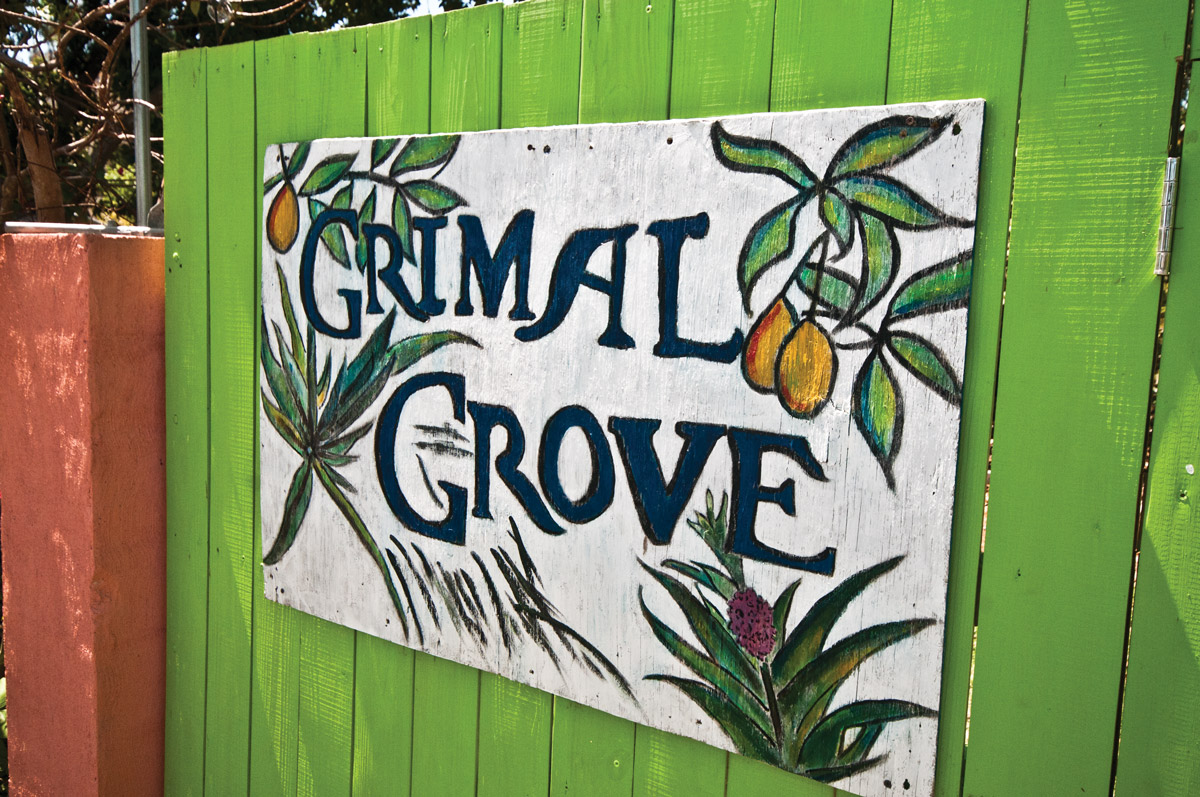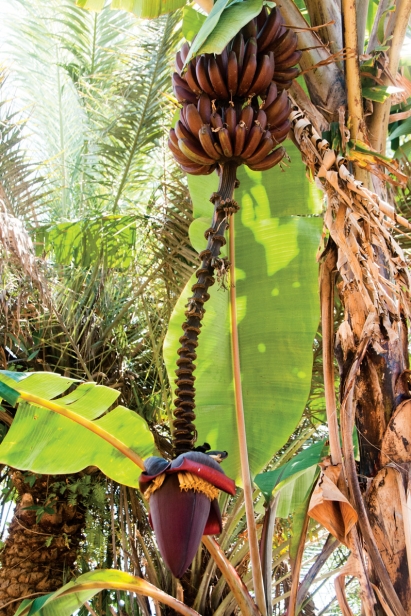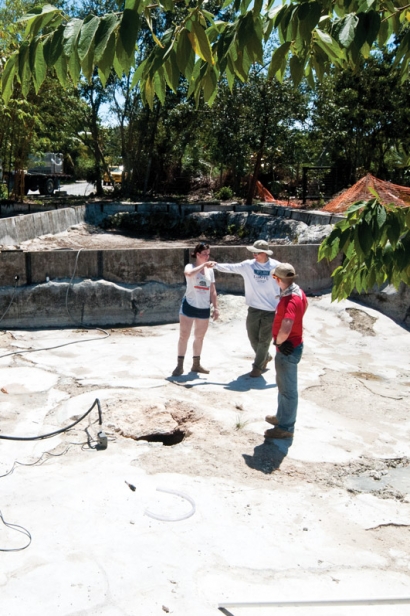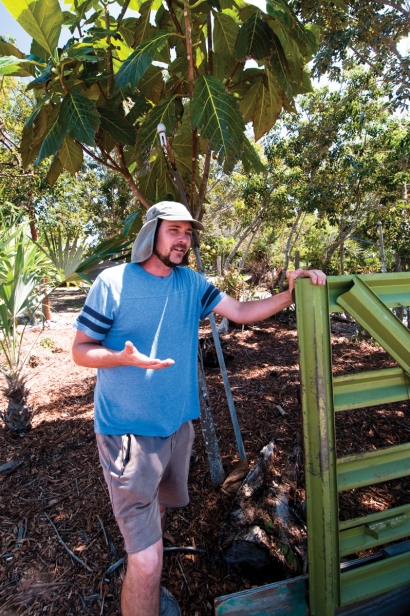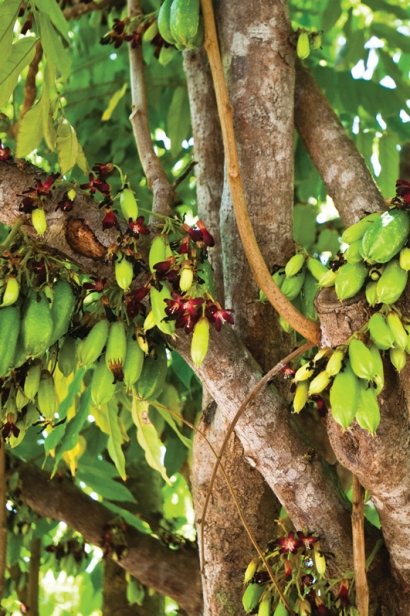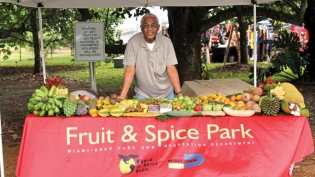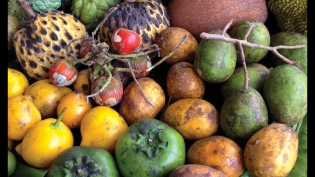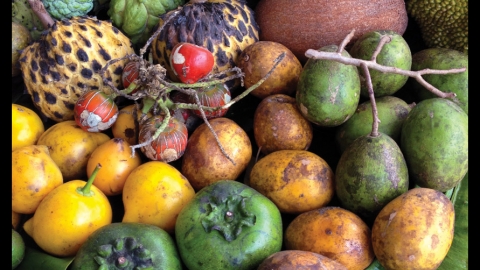Digging up the Past: Grimal Grove
Just a few blocks off the Overseas Highway on Big Pine Key, there’s a two-acre plot of land behind a cheerfully painted sign announcing Grimal Grove. Its story is one of horticulture mixed with equal parts of ingenuity, history and the personal obsession of not one, but two men of different generations.
The first is Adolf Grimal, a reclusive inventor from Michigan, who had visited the Florida Keys in the 1950s and decided to create a tropical fruit grove on the patch of land, about seven feet above sea level.
Any way you look at it, growing tropical fruits in the Florida Keys is a tough prospect. The climate is warm and frost-free, but the soil is alkaline and rocky, with little organic matter, sitting atop oolite and surrounded by salt water. Grimal saw this as a challenge, singlehandedly digging out the rock to create deep holes for planting trees and trucking in soil from outside. He built catchment basins to capture and store water and developed an elaborate irrigation system. To fill his grove, he traveled the world to track down tropical fruits, including sapotes, annonas, breadfruit, durian and mango. Eventually, his achievements were recognized by colleagues. They included growing the only mangosteen growing in the United States, three types of durian, and a rare sapote called the Nuaga Sapote (more on that in a moment).
Garvey Does Some Digging
In 1997, Grimal died and the property deteriorated. For 15 years, the overgrown grove was used by derelicts and crack addicts. Enter obsessive number two: Patrick Garvey, not a hardcore horticulturist, but an educator and human resource manager. He was intrigued by the site and saw a paradise worth restoring. Through his nonprofit, Growing Hope Initiative, Garvey set out to raise funds to buy the property and pay off city fines. With community support and volunteer help, Garvey has been clearing out Grimal Grove, restoring old plants and planting new ones, and doing some slick sleuthing to discover the mysteries behind Adolf Grimal.
“It’s a little bit of archaeology,” Garvey says on a warm afternoon at the grove. Volunteers from Virginia Military Institute, on a volunteer spring break, have just discovered a well underneath one of the poured concrete containment pools. One not-so-mysterious revelation about Grimal: “He loved pouring concrete,” says Garvey, pointing out the honeycomb of walls on the ground that hold in the soil. While he has personally worked in the hot sun cleaning up the overgrowth, he says it takes more of his time to raise funds, write grants and build community awareness of the project. He also spends time trying to find out more about the aloof Grimal, who kept to himself. Using names found on the deed, he used Facebook to try to track down any relatives. The search seemed, well, fruitless. And then one day he got a message from someone in Detroit It turned out to be Grimal’s cousin. Garvey went up one weekend to visit with the family. “They’d all visited the grove during childhood,” he says, and shared stories about how driven cousin Adolf was – back in Detroit, Grimal had grown blueberry fields and nut groves, today lost to development. Today, those family members are working to find artifacts to help Garvey tell their relative’s story.
New Growth
Today, Grimal Grove has come a long way from the neglected lot of only a few years ago. It’s now open on Saturdays, and is available for private tours during the week. The fruit trees have stylish descriptive signs. New trees are ready for planting, and young trees are thriving in the ground, surrounded by cages to protect them from the key deer that wander on the property. There’s a regular schedule of after-school programs, yoga, concerts and classes. Harvested fruits go to area restaurants like Date & Thyme and Good Food Conspiracy, and creative chefs are finding uses for some of the grove’s exotic offerings. “We made bilimbi sours – delish!” says Lynn Bell of the Square Grouper Bar and Grill on Cudjoe Key. This strong community support has moved forward Growing Hope Initiative’s goal of transforming the grove into an education center and edible community park for sustainable projects in the Florida Keys.
Meanwhile, Garvey himself has been bitten by the fruit explorer bug. That very rare Nuaga Sapote (Pouteria nawe) on the property, brought back from the Amazon, planted by Grimal himself and believed to be the only one of its kind in the U.S. Last year, Garvey set off for the wilds of the Amazon to track down the tree. His adventures are another story altogether – and he now understands that his journey in fruit hunting has only begun.


